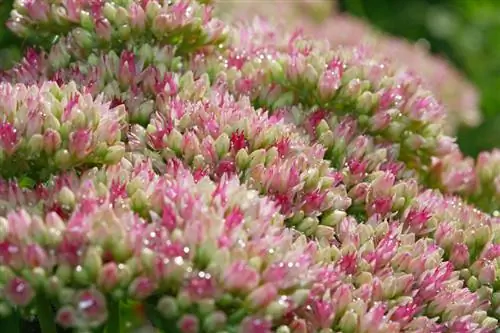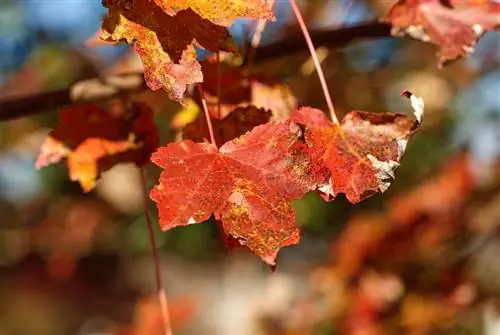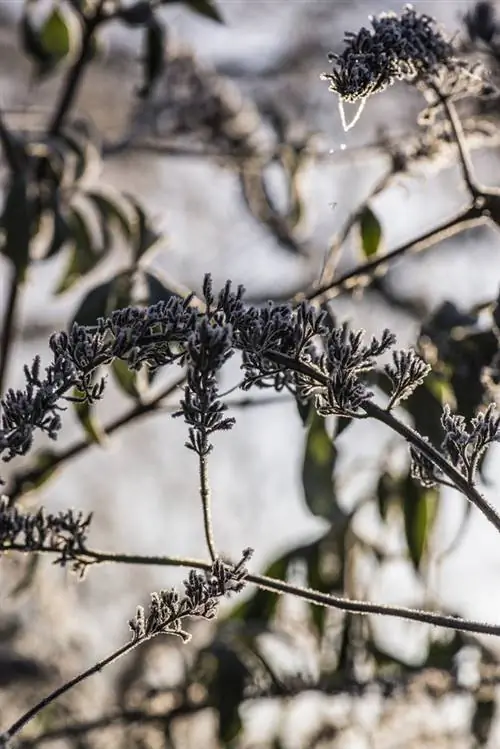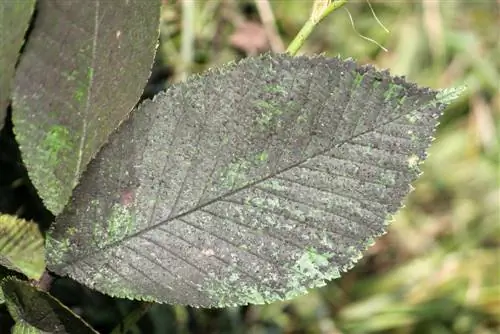- Author admin [email protected].
- Public 2023-12-16 16:46.
- Last modified 2025-01-23 11:20.
Bloodcurrants are among the robust ornamental plants that can cope with cold, wind and weather quite well. They are resistant to diseases and pests except for a few diseases. Symptoms and measures for diseases of bloodcurrants.
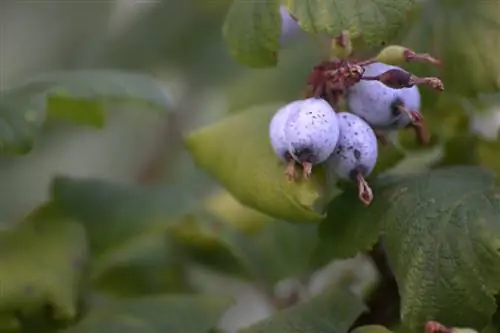
What diseases occur in bloodcurrants?
The most common diseases of the bloodcurrant are leaf drop disease, caused by the fungus Drepanopeziza ribis, and wilt disease, caused by fungi of the Verticillium family. Thinning, water-permeable soil and occasional spraying with nettle broth or tansy broth can help as a preventive measure.
The most common diseases of the bloodcurrant
- Leaf drop disease
- Wilt disease
Leaf drop disease
Leaf drop disease often occurs when spring has been very wet. The leaves initially show small brown spots, which become larger over time and run into each other. The leaves eventually fall off and the plant grows poorly. The cause of leaf drop disease is a fungus called Drepanopeziza ribis.
Drop off all affected shoots, right down to the he althy wood of the main shoot. Remove the cut plant parts and also collect any fallen leaves.
A good prevention is thinning the bush in spring. In doing so, cut out shoots that are too close together. Occasional spraying with nettle broth or tansy decoction also helps to combat the fungus.
Wilt disease
If entire shoots begin to wilt and die within a few days, the bloodcurrant may be suffering from wilt disease. It is caused by a fungus from the Verticillium family.
There's not much you can do about wilt disease. Cut off all affected shoots if the fungus has not yet spread throughout the plant. If the infestation is severe, the only option is to remove the bloodcurrant completely.
As a preventive measure, ensure loose, water-draining soil when planting a bloodcurrant. You should mix heavy soils with a little sand.
Never let bloodcurrants dry out
If the leaves of the plant wilt, it is not always a disease. Sometimes excessive dryness or waterlogging is also responsible. Make sure the plant is watered adequately if it is very dry. A location with permeable soil prevents waterlogging.
Tips & Tricks
If the bloodcurrant doesn't bloom in spring, it's almost never due to a disease. In most cases, the cause of a lack of flowering is incorrect pruning. Bloodcurrants should only be cut shortly after flowering. During later pruning, the parts of the plant on which the flowers will develop next spring are removed.


